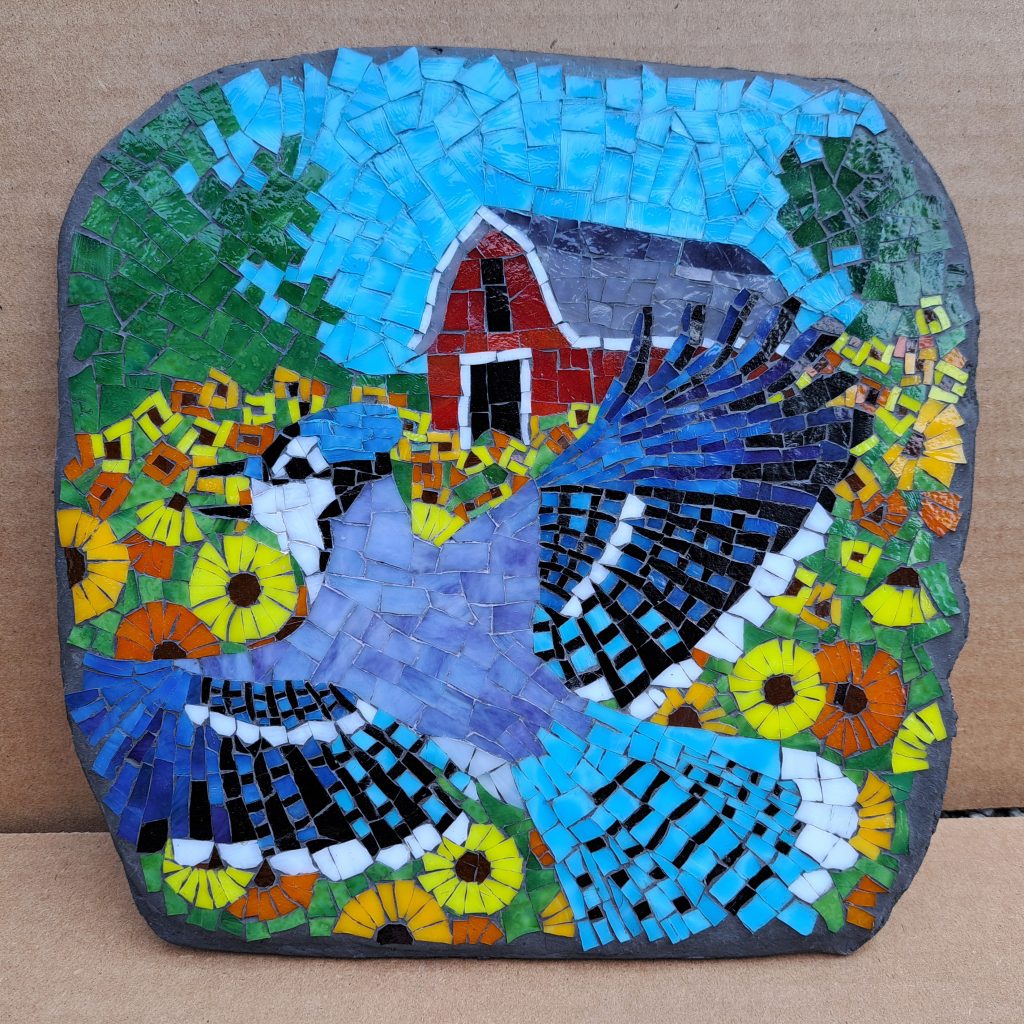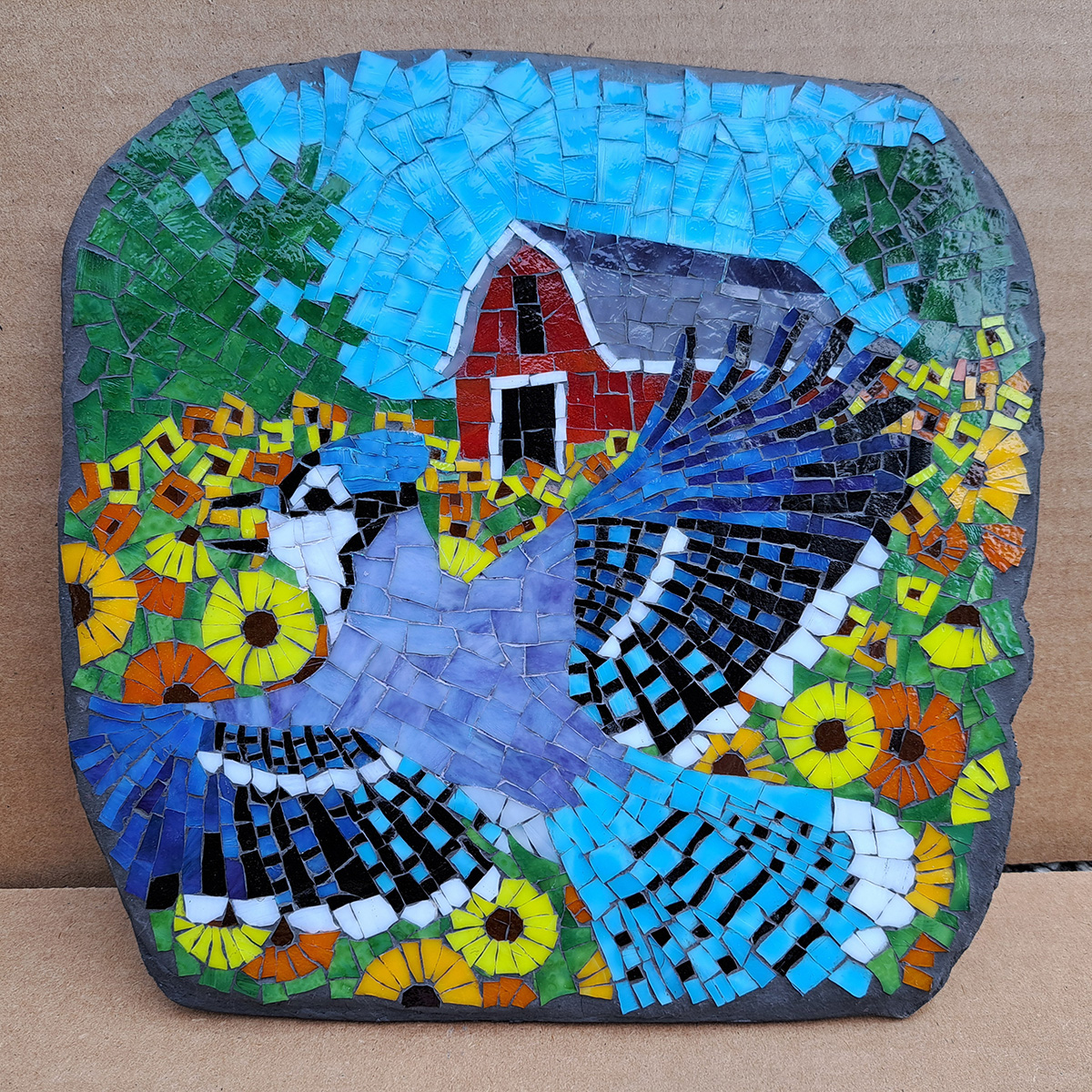As artists, we are often hypercritical of our own work and can only see the flaws in our art. Often times these “flaws” are details not even noticed by the viewer, and when the are noticed, they aren’t even perceived as flaws.
However, sometimes we really do screw up a detail in an otherwise perfect composition, and that is really demoralizing.
As artists we feel that we are only as good as our latest work, and all previous accomplishments are irrelevant, and so this one failure takes on a psychological weight that is all out of proportion.
That’s why it’s important to know how to rework defects.

Case Study
My recent mosaic Blue Jay is a good case study for the subject of reworking to salvage a flawed mosaic.
I had spent so much time and care rendering the bird’s wings and tail feathers with tiny tiles that I worked a little too quicky when I got to the more uniform areas of the sky and bird’s back.
In these areas, I used larger tiles with a looser fit. My only concern was getting the color right when I should also paid attention to fit and andamento.
The grout gap was significantly wider and more variable in these areas, but the problem wasn’t visible before grouting.
After grouting, these problems stuck out like a sore thumb.
I could not look at the mosaic without seeing how amateurish those areas looked sitting right beside the rest of the mosaic.
PRO TIP: For non-architectural mosaics that are strictly art, you don’t need grout or a grout gap. In fact, mosaic images look best with no grout gap. A gap is only needed when the surface needs to be grouted to prevent water from seeping through to the adhesive, which isn’t a concern in fine-art mosaic.
Grout Staining
For dry indoor mosaics, acrylic paint can be used to alter the grout color by “staining” after the mosaic is completed.
The paint is applied in a wipe-on/wipe-off method similar to applying stain to wood.
The purpose of the staining for this mosaic was to make the grout line in these problem areas as inconspicuous as possible.
For the sky, I mixed a tint of phthalocyanine blue and titanium white tempered with red oxide. The purpose of including the red oxide was to lower the intensity of the blue.
For the grout line to be inconspicuous, the stain couldn’t be too intensely blue, but it also couldn’t be too light in color.
DEFINITIONS: In painting, a “tint” is a mixture of a pigment with white. A “gray” is a mixture of any two pigments.
For the bird’s back, I used a “gray” made from ultramarine blue, red oxide, and titanium white.
Cheating in Art
Art is a pursuit where bending the rules is encouraged and often leads to new discoveries.
As an engineer, I was rule bound more than I realized when I started making art professionally.
Since then, I have had many experiences that have opened my eyes and made me a freer and better artist.
The staining of grout lines is a good example of what I mean.
I was originally mortified with the thought of applying paint to one of my mosaics to correct a mistake, even if it was only to tweak the color of a grout line.
Then I recalled all the time I had spent trying to figure out this detail in a mosaic made by Chagall.
It took me longer than I would like me to admit because my mind couldn’t accept what it was seeing:
Chagall had simply painted the detail on top of the finished mosaic.
Even though the brush strokes clearly went over the grout line, it took me a while to see what was really there.
Afterwards I felt foolish. That is how blinded my creative mind was from all the rules imposed on it.
Making art has great value in opening the mind.



Leave a Reply